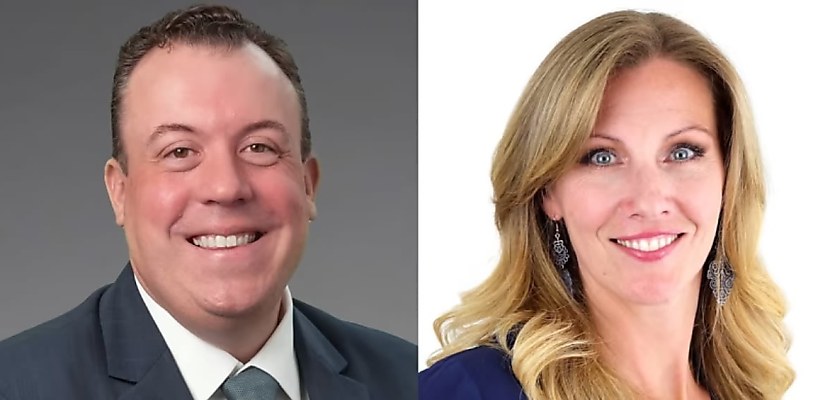With a number of legislative changes coming into play around mental health risks in the workplace, these lawyers note that businesses need to be abreast of these changes and make proactive changes.
Dominic Fleeton is a partner at global law firm K&L Gates, and Emma Parsons is a workplace mental health risk consultant. Speaking recently on REB’s sister brand podcast, The Lawyers Weekly Show, the pair discussed how firms could be managing mental health risks in the workplace post-pandemic and new developments in this space.
As new definitions of concepts like psychosocial hazards come into play, there are a number of legislative changes regarding mental health in the workplace to be aware of, said Mr Fleeton.
“In terms of what’s being changed in the model WHS regulations, it’s important to make the point that those changes have been agreed on, but it’s up to the various states and territories to make those changes in their own mirror version of the regulations ... It introduces this concept of psychosocial hazard and psychosocial risk, and imposes a clear obligation on employers to implement control measures that are designed to eliminate those risks,” he said.
“If it’s not reasonably practical to eliminate those risks, then those risks need to be minimised. And it hopefully also includes a list, which is a non-exhaustive list of the sorts of matters that an employee needs to have regard to when determining what sort of control measures could be implemented. Just to give you, by an example, one of those matters listed is the duration, frequency, and severity of worker’s exposure, and the exposure of other persons to psychosocial hazards.”
There are also a number of more specific requirements that have been proposed, explained Mr Fleeton.
“One of those is that if an employer identifies certain types of psychosocial hazard risks, then they need to put in place a written prevention plan. So, this would apply where the employer identifies the risk of arising from aggression or violence, bullying, sexual harassment, exposure to traumatic content or events, or high job demands. If an employer identifies any of those as being risks in their workplace, then what’s proposed is that the employee will need to put together a written prevention plan, which identifies the risks, identifies the control measures for all the risks, sets out the plan as to how those control measures are specifically going to be implemented, and also, importantly, describes the consultation that the employer undertook in relation to the matters that are canvassed in the plan,” he added.
“The other element of what’s proposed is that employers with more than 50 employees would be required to submit half-yearly reports to the state safety regulator, being WorkSafe Victoria, which would need to set out certain information if, during the six-month reporting period, the employer received a complaint involving aggression or violence or bullying or sexual harassment. So, it is not all employers; the proposal is [that] there would be that 50-employer headcount threshold to whom that reporting obligation would apply. And the information that needs to be reported is not detailed, but what is proposed is that regardless of what happens with the complaint, it’s the fact of the employer receiving a complaint about those matters, that’s what triggers the obligation to report.”
Additionally, Ms Parsons explained that there are a number of positive benefits from these new proposals — particularly in terms of making both employees and employers more aware of psychosocial risk and acting in more proactive ways rather than reactive ways.
“It’s very reactive, and with regards to the EAPs, the uptake isn’t very high, especially in male-orientated businesses and industries, because men don’t talk. So, it’s looking at moving more into a proactive measure of, one, getting people to actually understand what constitutes mental health, what constitutes work-related stress, and how do we actually manage it? The thing that I worry about is that there’s so much going on right now. We’ve got high job demands, just because we’ve got low resources to fill those voids,” she said.
“To give you an example, we did a risk assessment a month ago with a client, and we had a 600 per cent increase in events. Only 40 per cent were reported, and the fallout, with regards to human behaviour of what happens when people are exposed to that ... So, it’s not just the individuals; it’s the exposure of the people that are around them, how that plays out and how that increases risks on many of the factors of psychosocial hazards. How are they managing that? So, getting your head around what it actually looks like, getting good systems in place so that you don’t have to think about it, that it just gets automated and then making a plan.”
And if organisations don’t have these systems in place moving forward, they’re going to start experiencing negative side effects, Ms Parsons continued.
“My prediction is that they will start by highlighting, ‘Okay, can you give me your system on psychosocial hazards?’ And if clients don’t have that, they’re going to fail, they’re going to lose their accreditation. So, getting a system in which one person looks after one department, looks after, as a whole, getting the consultation going all the time. The way that we do it is we do it every six months, with all of our clients,” she added.
“So, we actually sit down to get their perception, because two people can sit down and do the same job. One can be a worker bee, one may not be, and the one that’s been a worker bee loves being micromanaged. That it’s not a problem for them at all. The other person, they’re getting stressed out by the same boss talking to them, micromanaging them. And unless you have these consultations, you do not know. This is not a time for guessing.”







You are not authorised to post comments.
Comments will undergo moderation before they get published.